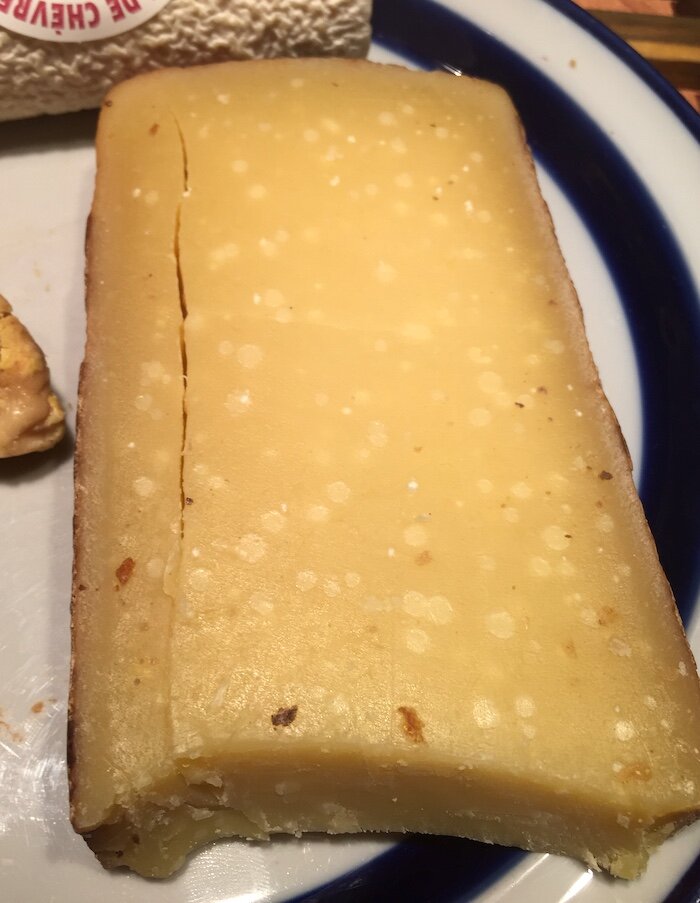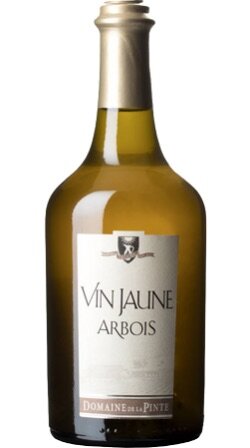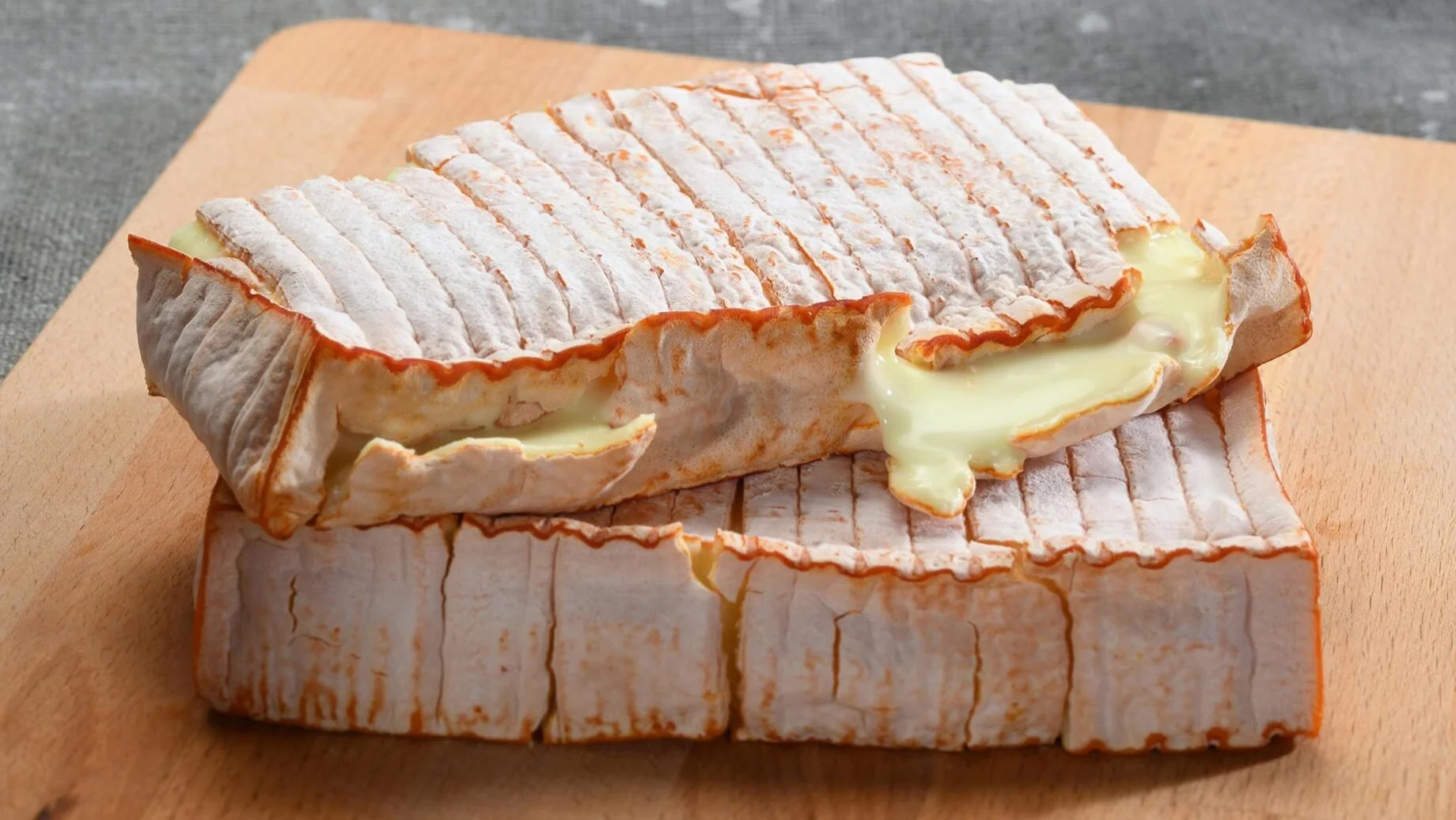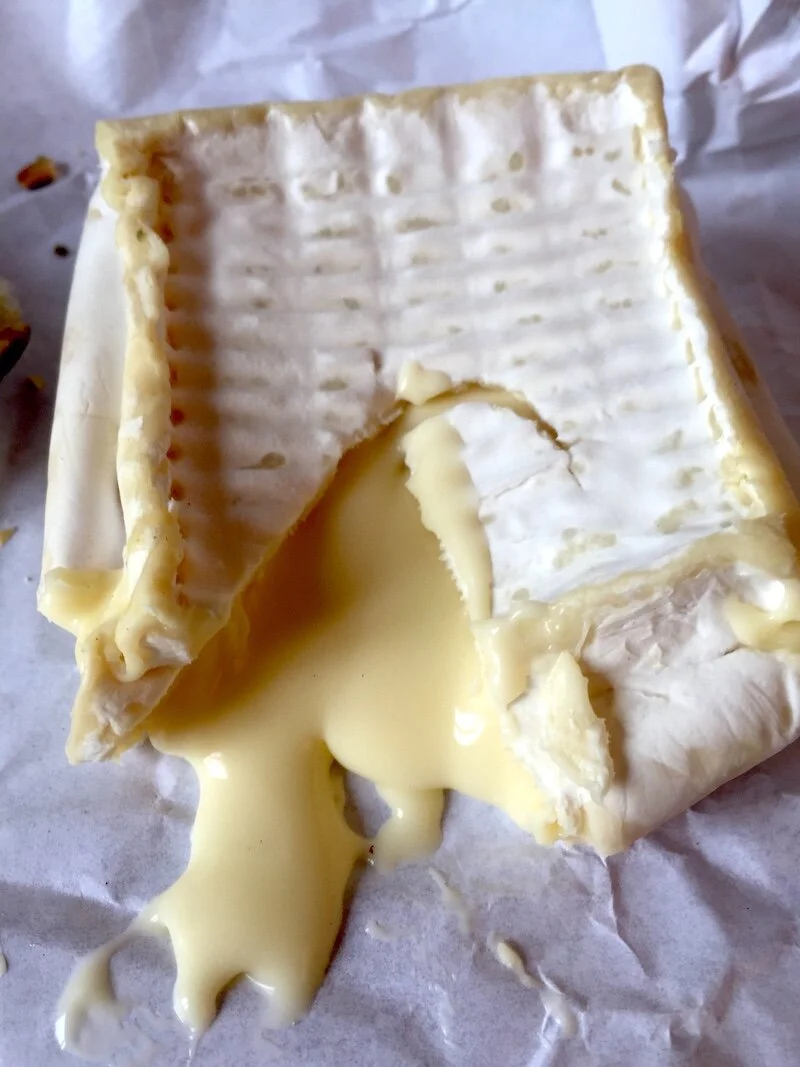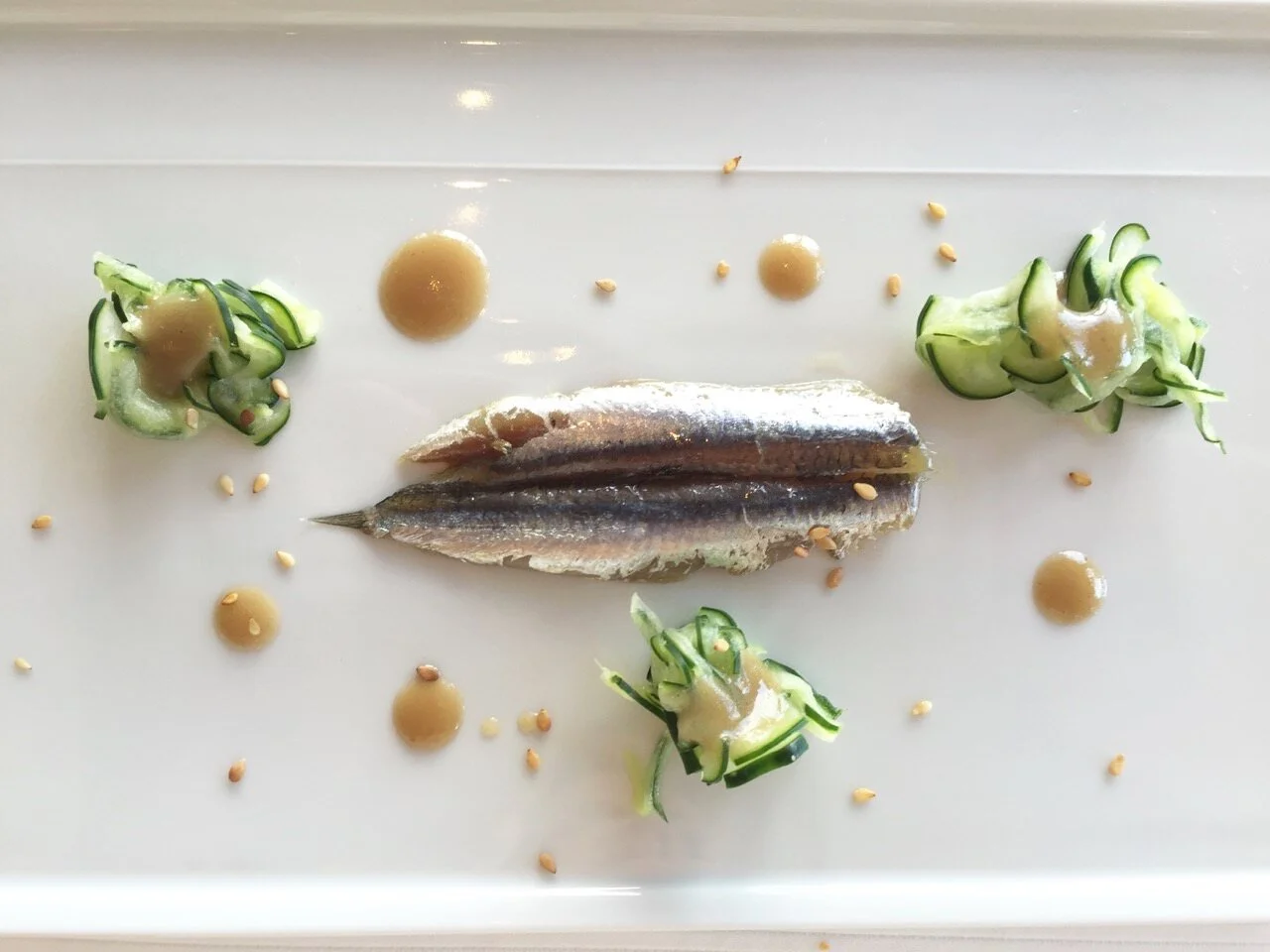Photo: Myrabella : Wikimedia Commons
World Cheese Encyclopaedia - Each Sunday learn all about a new cheese.
This week Comté from France.
Country: France 🇫🇷
Region: Franche-Comté, Jura Massif
Made from: Cow’s milk
Pasteurised: No
Texture: Hard, firm, grainy, dense
Taste: Creamy, nutty, fruity, sweet, peppery
Certification: AOC, PDO
Aging: 4 - 36 months
Comté (or Gruyère de Comté) is a French cheese made from unpasteurized cow's milk in the Franche-Comté province of eastern France. The unpasteurised cow's milk used is from Montbeliarde Cattle or French Simmental (or crossbreeds of the two).
It is a cooked pressed Gruyère style cheese made in large discs of between 40cm and 70 cm in diameter and about 10 cm high. The milk fat content is 45%. Each disc weighs up to 50 kg and requires as much as 600 litres of milk to produce.
The rind is usually a dusty-brown colour, and the internal paste is a pale creamy yellow. The texture is relatively hard and flexible and firm.
Comté has been awarded both AOC certification as well as PDO (Protected Designation of Origin) certification from the European Union. These certifications ensure that Comté is produced according to strict procedures, and only within the designated area.
Comté has the highest production of all French AOC cheeses, at around 64,000 tonnes annually, and is the most popular PDO cheese from France outselling the next most popular cheese - Roquefort - by about 2 to 1.
What is fascinating about the production of Comté is that there are three separate groups involved in the process: the dairy farmers, the fruitiéres – or cheese makers, and the affineurs – the people who age the cheese.
Milk for Comté comes exclusively from the Montbéliarde and French Simmental breeds of cow. Each cow is given a whole hectare of pasture land in the summer months to roam and feed on natural grass and herbage. At the end of the autumn, the cows are returned to the barn where they are fed on locally harvested hay. There is no fermented feed such as sileage allowed as it would adversely affect the quality of the milk.
The raw milk is delivered straight from the farms to one of the local creameries, called fruitiéres. There the milk is poured into large copper vats where it is gently warmed. Rennet is added, causing the milk to coagulate and form curds. The curds are then cut into tiny white grains that are the size of rice or wheat which are then stirred before being heated again for around 30 minutes. The contents are then placed into large moulds and pressed for an entire day to squeeze out any excess whey. Coarse sea salt from Guérande, along with a yeast solution, is brushed onto the rind. The wheels are left to mature in the cellars, first for a few weeks at the dairy, and then over several months at one of the registered agers (affineurs).
The strictly controlled manufacture of Comté according to it’s AOC status states:
· Only milk from Montbéliarde or French Simmental cows (or cross breeds of the two) is permitted.
· There must be no more than 1.3 cows per hectare of pasture.
· Fertilization of pasture is limited, and cows may only be fed fresh, natural feed, with no silage.
· The milk must be transported to the site of production immediately after milking.
· Renneting must be carried out within a stipulated time after milking, according to the storage temperature of the milk.
· The milk must be used raw. Only one heating of the milk may occur, and that must be during renneting. The milk may be heated up to 56C / 133F.
· Salt may only be applied directly to the surface of the cheese.
· A casein label containing the date of production must be attached to the side of the cheese, and maturing must continue for at least four months.
Photo: CC/Orr10
A further step in the process to ensure good quality for Comté cheeses is taken when each cheese has been aged for 4 months. At that time the cheese is graded by inspectors and given a score out of 20.
The score is based on 'overall appearance' (up to 1 point), 'quality of rind' (1.5 points), 'internal appearance' (3.5 points), 'texture' (5 points), and taste (9 points).
Cheeses that score more than14 points are called Comté Extra, and are given a green casein label with alogo of a green bell.
Cheeses scoring between 12-14 points are given a brown label and are simply called Comté.
Any cheese scoring 1-2 points (out of a possible 9) for taste, or less than 12 points overall is prohibited from bearing the name Comté and is sold for other purposes.
Comté is well known for its distinct terroir. The term "terroir" refers to a particular smell and taste that comes from the immediate local environment and its traditional methods of production. As Comté is produced very locally by each fruitiére, from local farmers milk, no two wheels of Comté taste exactly alike. There are also seasonal differences. Summer Comté being more golden colored and with a richer, earthier flavor whereas winter Comté is more cream-colored and the flavor is more delicate.
Comté has to be aged for a minimum of 4 months, but is often aged for longer. As it ages, the flavors intensify and the texture of the cheese becomes more firm. In very old Comté you might even notice small crunchy crystals.
Comté has a complex palate with almost 83 flavours which can be savoured while tasting it including nutty, creamy, fruity, peppery and toasty. The main aromas are a balance of brown-butter and roasted-nust with a sweet finish.
History
Comté has been made for over 1000 years. In the 11th century, the farmers of the Franche-Comté region started to work together to collect the milk they each produced and give it to a « fruitière » or cheese dairy to produce Comté cheese. Over 3,000 family farms in the mountainous region stretching between Jura and Doubs to Ain produce the milk for Comté cheese. The mountains in this range formed during the Jurassic period and range in height from 500 to 1500 metres. They are interspersed with rivers and green valleys making this a great place for the families to keep their herds.
Photo: Cavissima
The production method for Comté is still based on the original co-operative approach and the artisan traditions.
Comté was granted Appellation d’Origine Contrôlée (AOC) status in 1958. This means that the production must follow strict rules and also ensures that it remains based on traditional methods to maintain its distinct taste.
In 1996 Comté was further protected by being awarded with Protected Origin Nomenclature (AOP) status by the European Union
How to Enjoy It
Comté is a very versatile cheese. It’s firm texture means it can be sliced or grated.
It is delicious on its own with crackers, or bread, or as part of a cheese board. It melts well which makes it a good addition for many recipes such as a classic french Croque Monsieur, Swiss fondue or as part of omelettes, pasta dishes and grilled cheese.
Pairing Comté well depends on the age of the cheese. When it is younger it can pair with a wide variety of red wines such as Cote de Rhone or Rioja from Spain. As it matures and the flavors intensify, it starts to go better with some white wines such as a local dry Arbois or Vin Jaune. A not too dry sherry such as an Amontillado sherry from Spain compliments the flavors nicely or you can even try a slice of Comté with a glass of champagne.
Sources: Wikipedia, Fiona Beckett, thekitchn.com, cheese.com, frenchmoments.eu, comtecheese.co.uk, Cavissima
Follow True Foodies
Have you always dreamed of becoming a better cook? Now you can with our online video cooking classes



